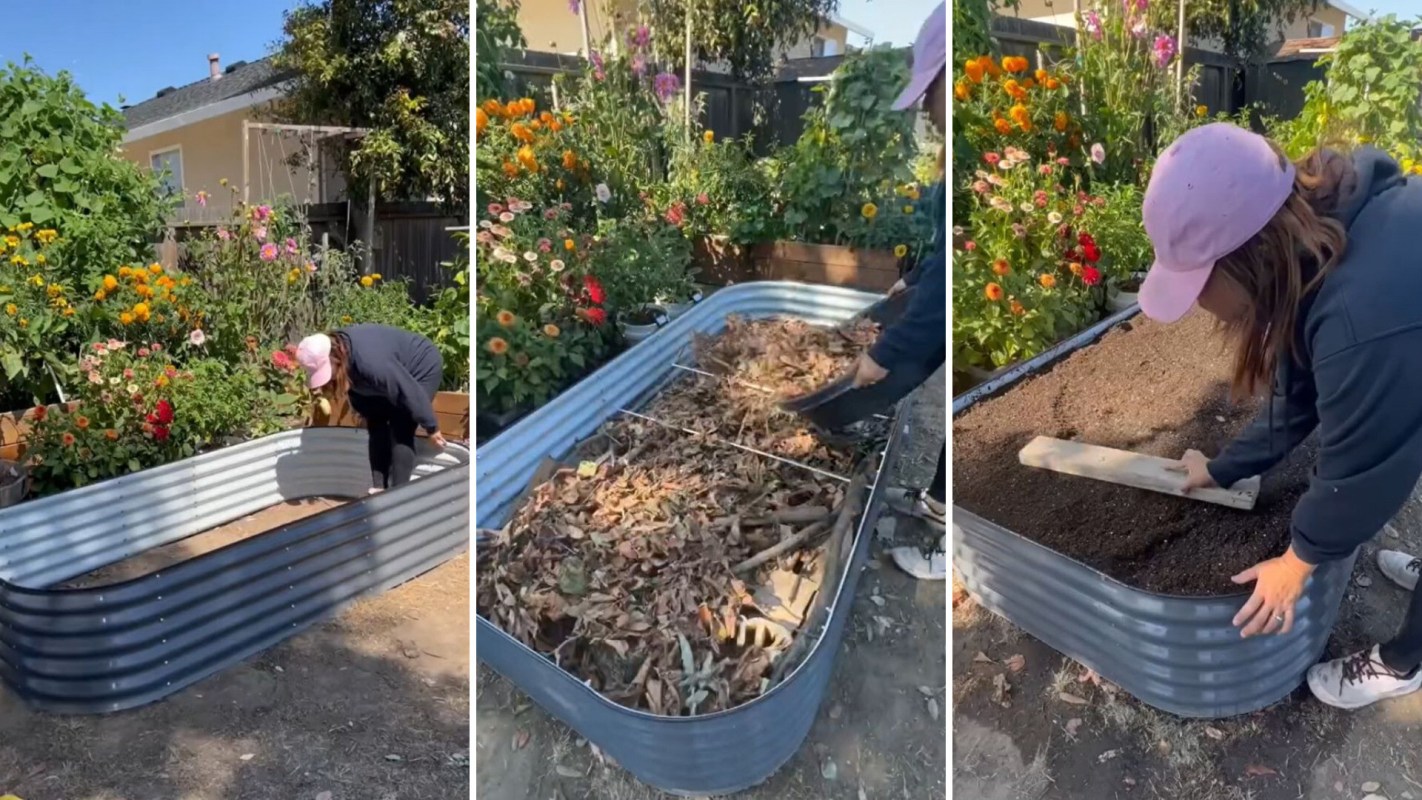Gardening materials can be expensive, especially when it comes to raised garden beds. One TikToker, however, is proving that it doesn't need to be.
The scoop
Nita (@theloveforgardening) posts about her passion for gardening and the tips she's picked up along the way on her TikTok page.
One of her pinned videos features a recipe for the ideal soil for your raised garden bed, and like getting dressed for a cold winter day, it's all about layering.
@theloveforgardening #sharing how I filled a raised garden bed from last summer. #gardening #raisedbed #raisedbedgarden ♬ Lollipop - The Chordettes
Nita begins with a thick layer of cardboard on the bottom that she stomps down to make it as packed-in as possible. Then, she adds a layer of wood — consisting mostly of sticks, but with some scrap wood as well.
After this layer, she adds a thick covering of leaves and sprays water over the surface. Then, she adds a layer of soil, followed again by water, and then compost.
Lastly, on top of the compost, Nita adds one more layer of soil and soaks it all with water again.
TikTok users commented that it seemed like a worm terrarium, which is great news for your garden because worms help to keep the soil nutrient-rich — and Nita confirmed that there are indeed worms.
"[This is] how I filled a raised garden bed from last summer," Nita explained in the caption.
How it's helping
Besides giving you amazing soil to grow your flowers, fruits, or veggies, this hack also costs less than buying soil to fill the entire garden bed, and it cleans up your yard in the process.
Instead of needing to find a place to put the leaves you raked or sticks you picked up, you can save them for your garden. And if you have any leftover wood from other projects, you can put that to good use as well.
Your healthy garden will mean an abundance of fruits, veggies, or flowers, all of which are an asset to your kitchen (either for food or decoration), and they're great for the environment, too.
Produce travels an average of 1,500 miles to get to your kitchen, meaning that it's not as fresh as the stuff from your garden, and it contributes planet-warming gases to the atmosphere in the commercial growing and transportation process.
According to The Center for Climate and Energy Solutions, the agricultural industry makes up 11% of the world's carbon pollution, so any produce that you grow, no matter how little, will help to cut back.
If you're not interested in growing produce, having a healthy flower garden will provide a bustling hub for pollinators, which will work to keep local crops and wildlife healthy, too.
What everyone's saying
Comments on the post were impressed with the hack and Nita's gardening skills.
"You make it look so easy," said one, while another added, "I need to make friends with people like you [who will] teach me."
Join our free newsletter for easy tips to save more, waste less, and help yourself while helping the planet.









